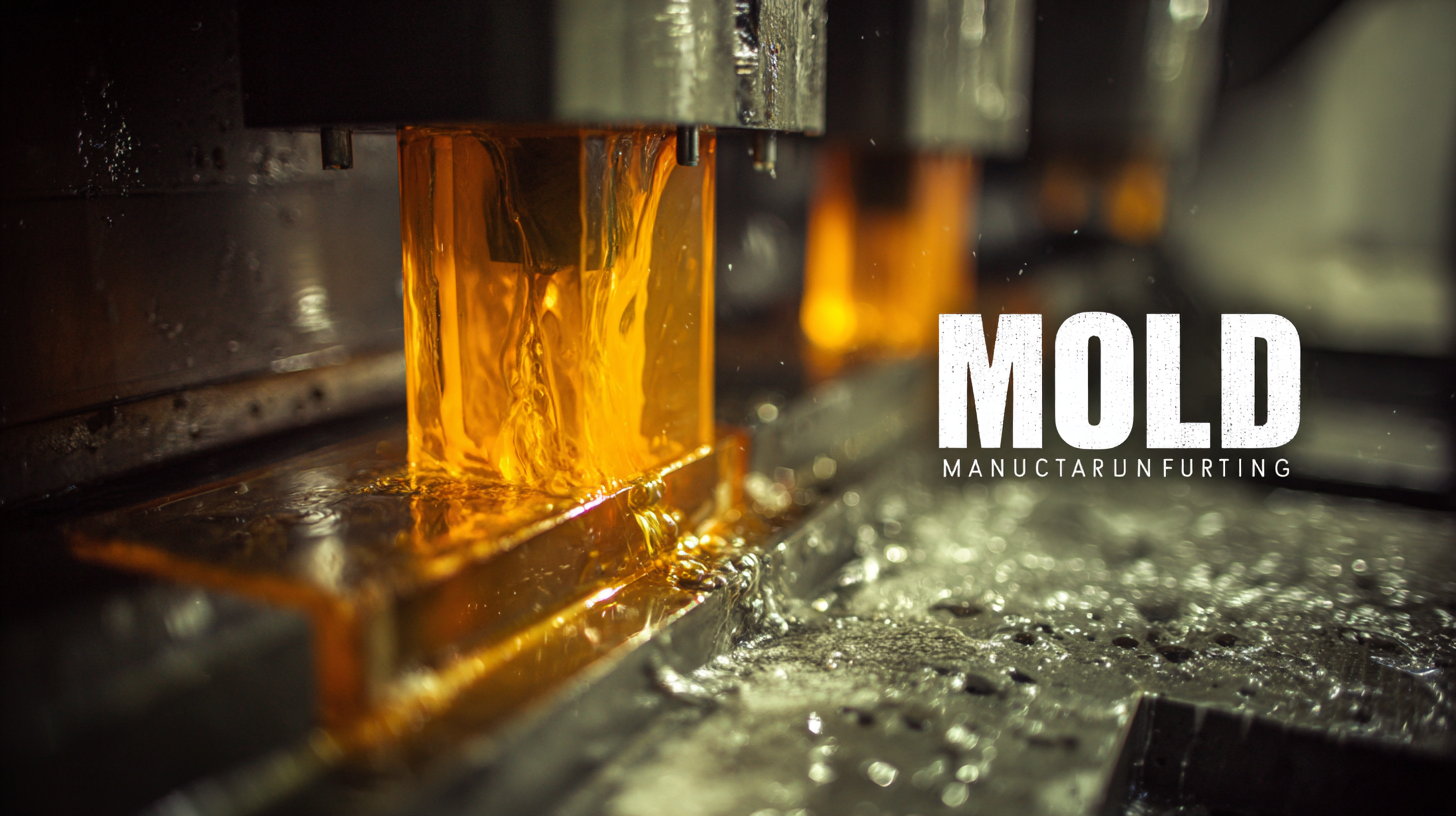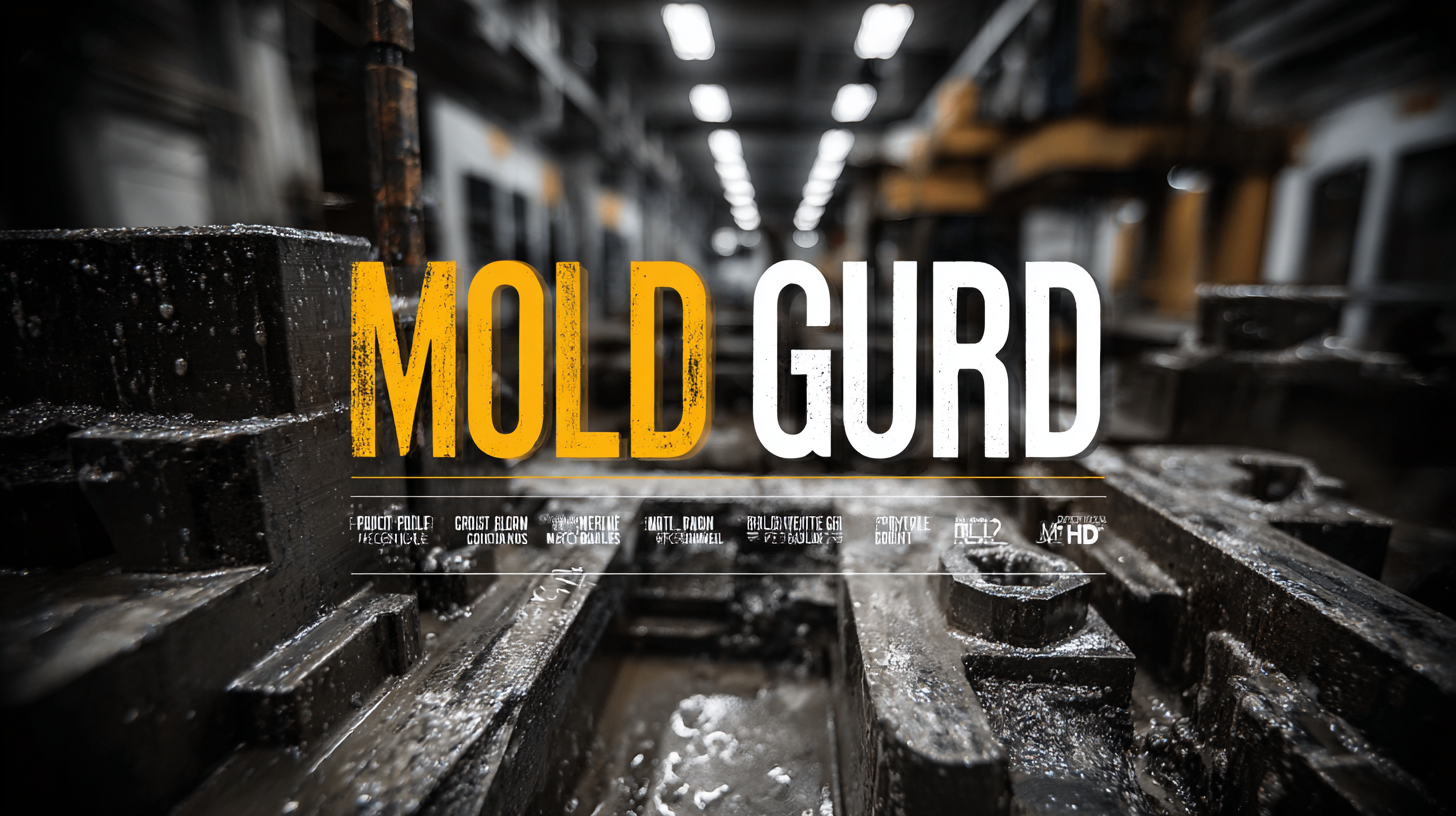


In the world of Mold Manufacturing, global buyers face a myriad of choices that can significantly impact their production efficiency and costs. According to a report by Grand View Research, the global mold manufacturing market size was valued at approximately $27.8 billion in 2020 and is projected to expand at a CAGR of 6.2% from 2021 to 2028. This substantial growth underscores the importance of selecting the right manufacturing partner. Factors such as technological capabilities, material quality, and production lead times are critical in making an informed decision. Furthermore, as industries continue to evolve rapidly, the demand for precision and customization in mold making has never been higher. This comparative guide aims to equip buyers with essential insights and criteria to navigate the complexities of mold manufacturing effectively, ensuring they make choices that align with their operational needs and strategic goals.

When choosing a mold manufacturer globally, several key factors must be considered to ensure quality and cost-effectiveness. According to a recent report by MarketsandMarkets, the global injection molded plastics market is projected to reach $388.9 billion by 2025, showcasing the increasing demand for quality mold manufacturing. Buyers need to assess the manufacturer’s capabilities, including their technological advancements and expertise in specific materials. Manufacturers utilizing advanced technologies such as 3D printing or Computer-Aided Design (CAD) can significantly improve lead times and product accuracy.
Another vital aspect is the geographical location of the manufacturer. A study by Deloitte emphasizes that 70% of companies are reconsidering their supply chains due to rising shipping costs and lead times. Thus, selecting a manufacturer that is strategically located can lead to reduced freight costs and faster delivery. Additionally, understanding the quality standards upheld by potential partners is crucial. For instance, ISO 9001 certification is a prime indicator of a manufacturer’s commitment to quality management. This adherence to international standards ensures that the molds produced meet rigorous quality controls, ultimately benefiting global buyers in their pursuit of innovative and reliable manufacturing solutions.

In today's competitive global market, evaluating quality standards and certifications in mold production is paramount for buyers seeking the best manufacturing partners. As production practices evolve, particularly with the rise of sustainable technologies, it's essential to consider manufacturers that align with current environmental standards. Recent studies highlight that companies implementing green manufacturing processes, including the use of recycled materials, not only enhance their product offerings but also contribute to significant pollution reduction—up to 30% in certain cases, according to industry reports.
Certifications such as ISO 9001 and ISO 14001 serve as benchmarks for assessing the quality management and environmental stewardship of mold manufacturers. These standards demonstrate a commitment to quality control and responsible manufacturing practices. Furthermore, companies experimenting with bioplastics are reporting increasing trends in biodegradability, with specialized assessments revealing that certain bioplastics meet stringent environmental criteria. Understanding these certifications and evaluating production methods will empower global buyers to make informed decisions that align with their sustainability goals while ensuring high-quality outputs in mold production.
When it comes to mold manufacturing, understanding pricing structures is crucial for global buyers looking to make informed purchasing decisions. The cost associated with mold manufacturing can vary significantly based on several factors, including the complexity of the design, the material used, and the production process itself. Buyers need to consider whether they are opting for low-cost options or investing in high-quality molds that may provide greater longevity and efficiency in production.
Another essential aspect of cost analysis is the geographical location of the manufacturer. Different regions can exhibit varied labor and material costs, which directly impact the final price of molds. Additionally, tariffs, shipping expenses, and other logistical factors can contribute to the overall cost. Buyers should also evaluate the manufacturer's reputation, experience, and technological capabilities, as these elements can affect the quality and performance of the molds, ultimately influencing the total cost over the product life cycle. By thoroughly analyzing these pricing structures, buyers can align their budgets with their quality requirements and production goals.

When considering mold manufacturing, one of the key decisions buyers face is whether to source domestically or internationally. Domestic manufacturers often boast shorter lead times and easier communication, enhancing collaboration throughout the production process. Buyers can benefit from proximity in dealing with any design adjustments or urgent modifications, as well as the potential advantages of local labor laws and environmental standards. Additionally, supporting local economies can improve brand reputation and foster community relations.
On the other hand, international mold manufacturers frequently offer lower production costs due to cheaper labor and materials. This can be especially beneficial for large-scale projects where budget constraints are critical. Countries known for their advanced manufacturing capabilities, such as China and Germany, provide access to state-of-the-art technology and skilled labor pools that can lead to greater innovation in mold design. However, navigating language barriers and longer shipping times can pose challenges for international sourcing. Therefore, it’s essential for global buyers to weigh these factors carefully and choose the option that best aligns with their specific project needs and business goals.
This chart compares domestic and international mold manufacturers across four key dimensions: Cost, Lead Time, Quality, and Flexibility. The data points are reflective of general market trends, providing a basis for global buyers to make informed decisions.
When selecting a mold manufacturer, assessing supplier reputation and customer feedback is paramount. A supplier’s reputation can often be gauged by the longevity of their business, the quality of products they deliver, and their adherence to industry standards. Companies with a solid background and a portfolio of successful projects are more likely to meet your expectations. Trustworthy suppliers will often showcase client testimonials and case studies, providing a glimpse into their reliability and expertise. Using online platforms and industry networks to research these aspects can effectively narrow down your options.
Customer feedback serves as a vital indicator of a supplier's capability to meet specifications and deadlines. Analyzing reviews and ratings allows buyers to discern patterns in service quality, responsiveness, and post-delivery support. Engaging with previous clients or checking platforms dedicated to customer insights can provide additional context about a supplier's operations. By prioritizing these factors in your decision-making process, you increase your chances of selecting a manufacturer that not only meets your technical requirements but also aligns with your expectations for service and reliability.